Designer(s) Rob Hatch Publication date February 1, 1998 System(s) Storyteller System | Publisher(s) White Wolf Genre(s) Personal Horror | |
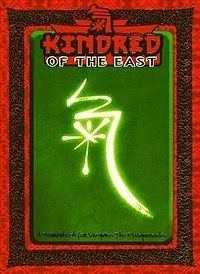 | ||
The gentleman s guide to vampires clan jiang shi
Kindred of the East is a role-playing supplement by White Wolf Game Studio to their Vampire: The Masquerade line. The vanguard of White Wolf's "Year of the Lotus" theme (which created "Eastern" counterparts to all of their major product lines in the World of Darkness), this rich sourcebook is a stand-alone setting, requiring only secondary rules to be fully playable. The setting spans Asia, allowing players to play the so-called Kindred of the East, vampires of Asia.
Contents
- The gentleman s guide to vampires clan jiang shi
- How to run a kindred of the east campaign
- History
- Overview
- Themes
- Yin vs Yang
- Hun vs Po
- Mortal vs Spirit
- Dharmas
- The Middle Kingdom
- References
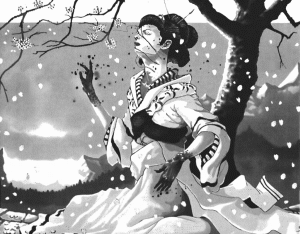
How to run a kindred of the east campaign
History
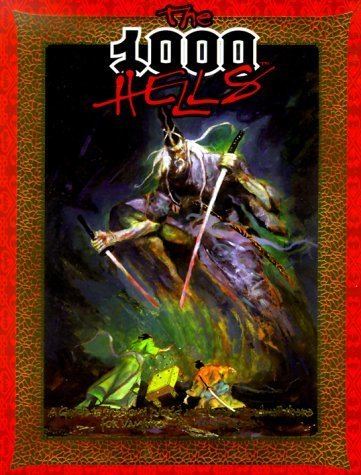
The Year of the Lotus was an event from White Wolf Publishing in 1998 which offered Asian counterparts to the existing World of Darkness lines in books like Hengeyokai: Shapeshifters of the East for Werewolf and Land of Eight Million Dreams for Changeling, as well as Vampire's hardcover release, Kindred of the East. Shannon Appelcline comments about the book: "Kindred of the East was a somewhat different sort of supplement for White Wolf. In previous years a book like that would certainly have formed the core of a whole new RPG line. However White Wolf instead used a new model that they had played with when they put out Mummy Second Edition (1997) the previous year. As a single major rulebook – but one that required another World of Darkness rulebook to play – Kindred of the East could attract some of the same attention as a new core RPG but without the need to support a new line. This offered White Wolf an alternative to the yearly churn of new game lines – though a few new lines would still appear in the following years."
Overview
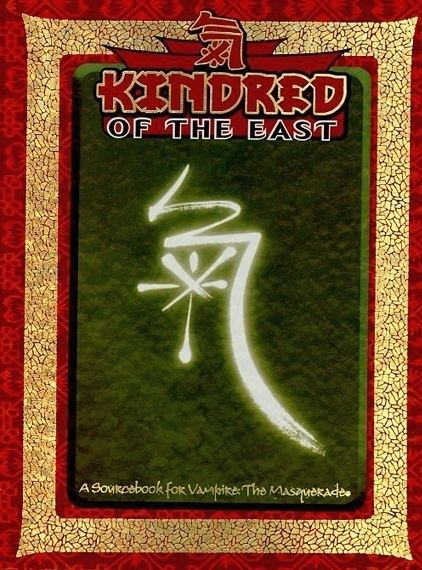
Characters in Kindred of the East (or Kuei-jin, as they call themselves) are vampires as depicted in classical Japanese, Chinese, and Indian Hindu, Taoist, Shinto and Buddhist mythology. Unlike the vampires traditionally associated with Dracula or Caine, Kuei-jin were once mortals who died with the burden of unfulfilled Dharma or duties. Tortured in Yomi for their inadequacies in life, their souls successfully escaped and returned to their bodies. Now half-alive and half-dead, Kuei-jin must live by stealing chi from mortal victims to sustain themselves while trying to fulfill their Dharma. The most convenient form of chi that can be stolen is in blood, leading to their vampiric tendencies, but they cannot create new vampires. Practically all Kindred distrust the Kuei-jin. The Kuei-jin are also known to war with the other sects for territory.
Themes
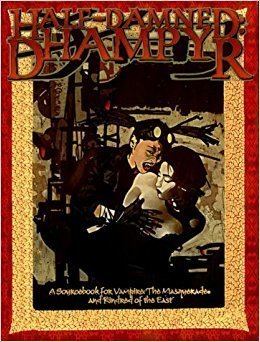
Kuei-jin are beings torn by inner conflict, and the themes of the game relate to this heavily. Unlike Western vampires, Kuei-jin are revenants and thus spiritual beings in nature.
Yin vs. Yang
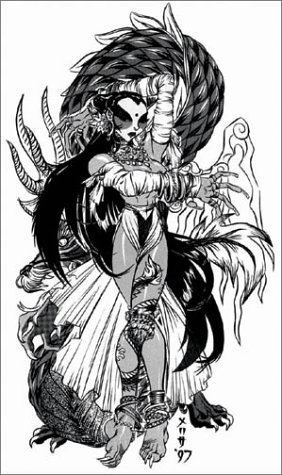
The classic opposition of yin and yang are important to Kuei-jin not only for philosophical reasons, but because this dichotomy also delineates the two forms of chi they can potentially ingest. An imbalance of yin or yang chi in their system can lead to dire consequences. Yin-imbalanced Kuei-jin become corpselike zombies suffering from a lack of emotion. At its worst, yin-imbalance reduces a kuei-jin to a hopping corpse. Yang-imbalanced Kuei-jin suffer wild mood swings and impulsive lusts for food, sex, and other forms of stimulation. Possibly the strangest consequence of yang-imbalance is the ability to have or sire children. Such children are called dhampyrs, and are mortal half-vampires.
Hun vs. P'o
A Kuei-jin's stint in the hells of Yomi divides the mind into two Hun and po parts: The Hun, or high mind, that is the seat of rational thought, and the P'o, or demon mind, that exists to satisfy its own base urges (usually at the expense of the Hun). As former wraiths, a Kuei-jin has a splinter of the forces of Oblivion in its soul. While many Kuei-jin see their P'o as a curse, it is important to note that without the P'o, they would never have escaped hell in the first place. Furthermore, Kuei-jin who stifle and contain their P'o utterly become cold, calculating individuals who lack any ideological spark; such stagnancy can be devastating when the weight of karma (spiritual consequences of actions) is on one's shoulders.
Mortal vs. Spirit
The Kuei-jin stand between the mortal world (which they can never fully return to) and the spirit world (which they cannot fully embrace). Many Kuei-jin struggle to find a balance between these two worlds that suits the precise nature of their Dharma.
Dharmas
A Kuei-jin's existence is a quest for enlightenment. In their search for karmic resolution, different Kuei-jin follow different paths to ease their karmic discomfort. The Dharmas, five philosophies accepted by the greater Kuei-jin community as potential paths, each emphasize a particular aspect of Kuei-jin existence:
In addition to these primary dharmas, a number of Heretical Dharmas have also come into existence. Not accepted in Kuei-jin society, these paths nevertheless find some followers:
Finally, some Kuei-jin turn their backs on enlightenment entirely, instead swearing fealty to the Yama Kings (the rulers of Yomi) to become Akuma, the demon people. Bartering their souls for power, Akuma enter Faustian deals with the Yama Kings and pursue only power.
The Middle Kingdom
Kuei-jin are the most visible shen (supernatural creatures) of the Middle Kingdom (modern Asia), but are not alone. Unlike Western Kindred, they have close ties with the spirit world. They must also compete with the hengeyokai (Shapeshifters of the East, as it were), mages, and gaki.
There are several offshoots of the Kuei-Jin who share a measure of their condition but are different in certain particulars. § Dhampyrs are the half-dead mortal children sired (or, more unusually, borne) by Kuei-Jin in the throes of Yang imbalance, which enables them to breed as if living. Capable of controlling Chi and manifesting Disciplines, the dhampyrs have many of the vampires' strengths and few of their weaknesses, both to a milder extent. § Yulan-Jin are a subset of Kuei-Jin whose souls are not able to reform their original bodies after escaping from Hell; instead, they possess the bodies of the recently dead, and when "killed", they must find a new corpse to inhabit, forcing them to switch identities. Are generally scorned by the Kuei-Jin for their perceived spiritual weakness.
